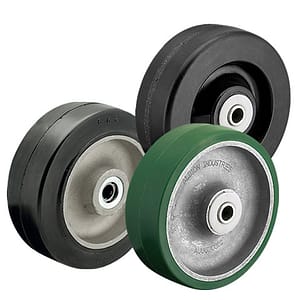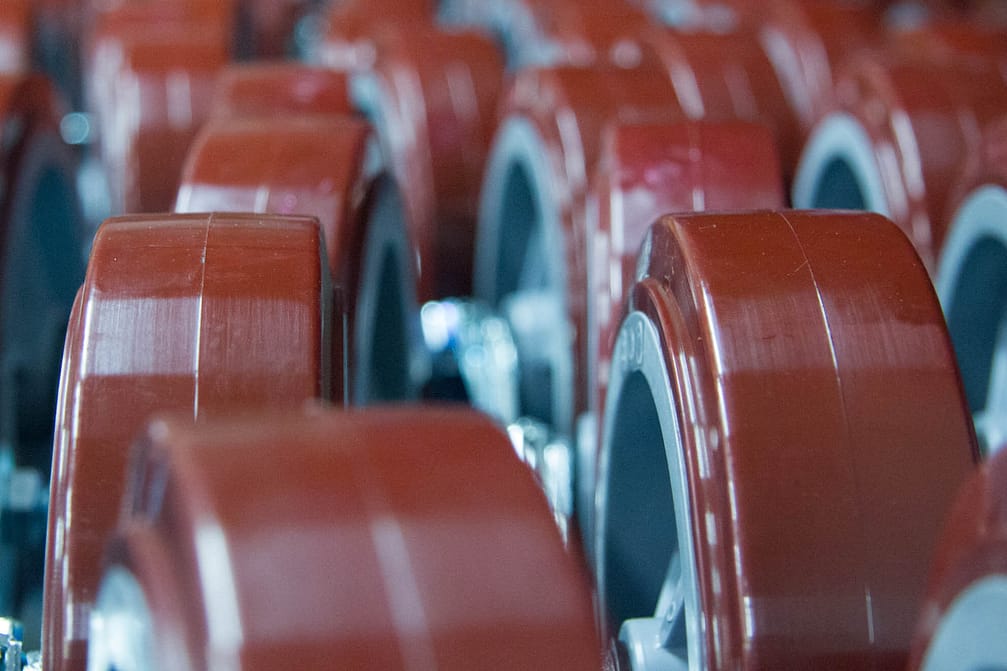Last month we talked about wheel size in relationship to rollability. Big wheels, assuming they are sized properly for the application, are easier to roll than small wheels. Today we’ll look at the tread material, where the rubber meets the road. (I apologize for that).
Wheels come with a variety of tread materials: Forged Steel, Cast Iron, Phenolic, Polypropylene, Polyurethane, Thermoplastic Rubber, Neoprene Rubber, Mold-on Natural Rubber, just to name a few. We could spend days going over the advantages, disadvantages, concerns, and general properties of each tread material; we like wheels. But to spare you, and hopefully keep your attention, we’ll stick to the basics. For most caster users, it’s not important to know each wheel and each wheels unique characteristics. We can group this in two ways: Tread Hardness and Tread Flatness.
 Wheel Hardness
Wheel Hardness
First, let’s talk about hardness. A hard wheel is much easier to push than a soft wheel; this is due to deflection. As the load on a soft wheel tread increases, the tread material flattens out. When this happens a greater surface area of the wheel comes in contact with the floor. In order to break static friction, you have to push pretty hard. A hard wheel doesn’t deflect under load, and therefore the added force required due to an increased load is reduced. But don’t go out and buy forged steel wheels right away. There are other implications of a hard tread material, like a lack of floor protection. We’ll cover that in the next issue.
Tread Flatness
Now let’s get to tread flatness. Our casters come with flat, crowned or round tread wheels. A flatter tread, generally speaking, is harder to push than a rounder tread. This follows a similar principle to tread hardness. A flat tread has more surface area in contact with the ground than does a round tread. A round tread caster, more or less, has a single point contact. With a single point of contact, overcoming the force of friction is nearly effortless, even under a heavy load. But that being said, a round tread wheel has a lower capacity than a flat tread wheel. That’s why we have crowned tread wheels. They offer small surface contact but similar capacities to flat tread wheels.
Each application is different and has different requirements. But for most a crowned tread, harder wheel, will perform excellently. Consult our caster experts with your application to get the right caster the first time.








